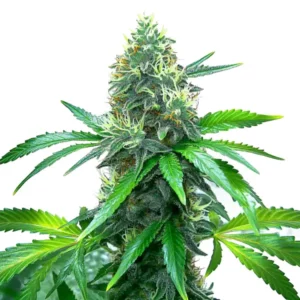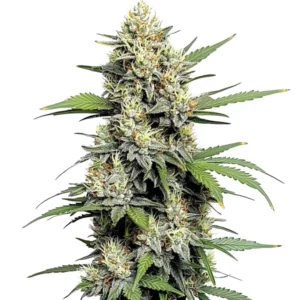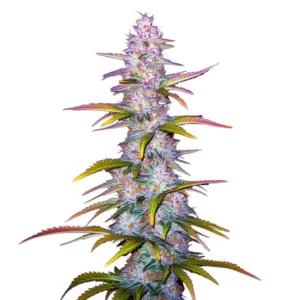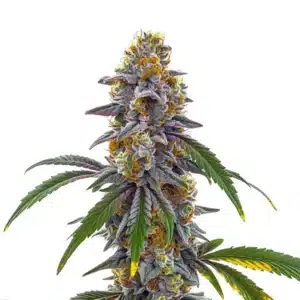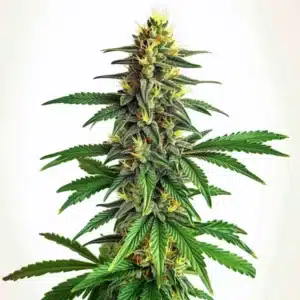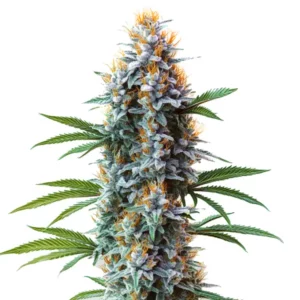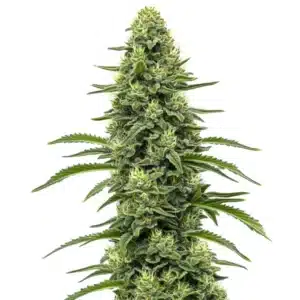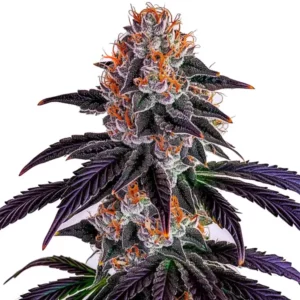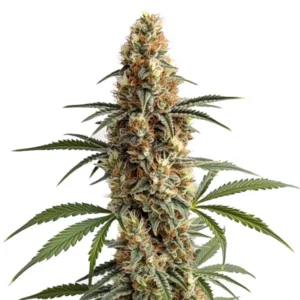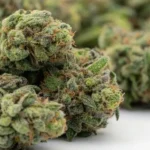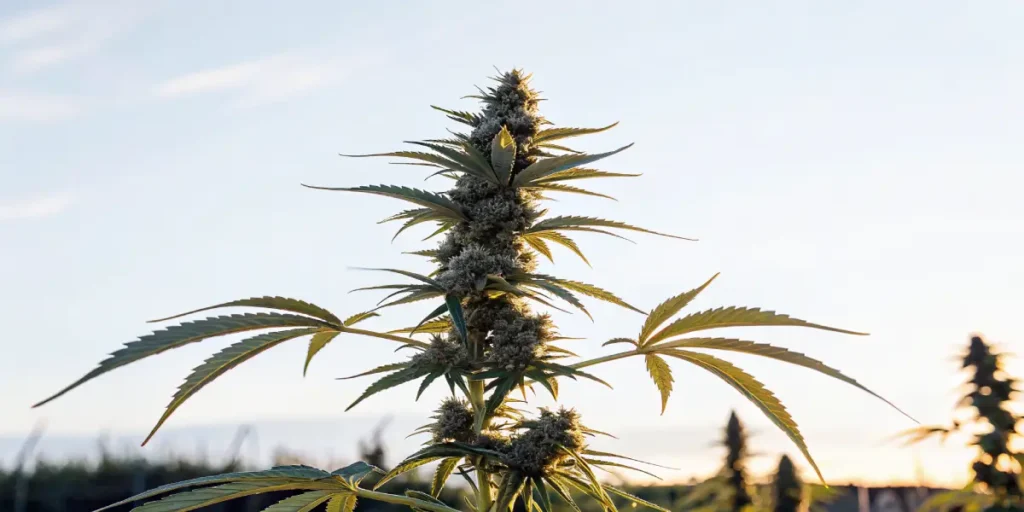
What is Apical Dominance in Cannabis
Apical dominance in cannabis is a natural concept that significantly impacts plant growth. It’s the process where the main stem (or apex) of the plant grows more dominantly than the side branches. This growth pattern is because the main stem produces a hormone called auxin, which inhibits the growth of lateral buds. Auxin ensures that the plant grows vertically towards the light, optimizing photosynthesis.
For both novices and seasoned growers, knowing what apical dominance in cannabis is can be transformative. It provides insight into how plants allocate resources and how growers can manipulate plant shape and size for better yields. When you manage apical dominance effectively, you can achieve a balance between vertical and lateral growth, crucial for optimizing space and light exposure.
Recommended Strains
Knowing how apical dominance affects cannabis plant shape allows you to guide your plants to grow as you want. By encouraging lateral growth, you can increase the number of flowering sites, which is especially beneficial in indoor grows where space is limited. The importance of apical dominance in cannabis cultivation cannot be overstated, as it directly influences your harvest’s quality and quantity.
Apical Dominance in Cannabis Growth Process
The cannabis growth process is fascinating, and apical dominance plays a key role. From the seedling stage, the main shoot takes the lead, dictating the direction and rate of growth. This dominance ensures that the plant focuses its energy on reaching the light source, which is vital for its survival and development.
During the vegetative stage, managing apical dominance in cannabis plants can lead to a bushier plant. Techniques like topping or fimming are popular among growers to interrupt the dominance of the main stem. By doing so, you encourage the development of multiple colas, which can significantly enhance your yield. For instance, the strain Gelato can benefit from these techniques due to its robust growth pattern.
Knowing what is apical dominance in cannabis is crucial in optimizing the growth process. It not only helps in achieving the desired plant structure but also in maximizing resource allocation. By mastering the nuances of apical dominance, growers can fine-tune their cultivation techniques to suit specific strain characteristics and growing environments.
Additionally, the apical dominance in cannabis growth process can be influenced by environmental factors such as light intensity, nutrient availability, and plant spacing. By carefully controlling these elements, growers can further enhance the effectiveness of their apical dominance management strategies, ultimately leading to healthier plants and more abundant yields.
Promos & Deals
Importance of Apical Dominance in Cannabis Cultivation
Knowing the importance of apical dominance in cannabis cultivation helps growers make informed decisions. When you’re aware of how the plant naturally grows, you can better manage your garden to suit your goals. Apical dominance not only influences plant shape but also impacts light distribution and nutrient uptake.
For example, if you’re growing indoors, maximizing light exposure is crucial. By controlling apical dominance, you can ensure that light reaches the lower parts of the plant, promoting even growth. Strains like OG Kush are known for their vigorous growth, and understanding apical dominance can help in managing their size and shape effectively.
Knowing the importance of apical dominance in cannabis cultivation can also aid in pest management. A well-managed plant with balanced growth is less susceptible to pests and diseases, as the even canopy allows for better air circulation and light penetration, reducing the likelihood of mold and infestations.
Furthermore, recognizing the importance of apical dominance in cannabis cultivation empowers growers to experiment with advanced techniques such as super cropping. This method involves pinching and bending the stems to strengthen them and promote lateral growth, which can further enhance yields and improve plant resilience.
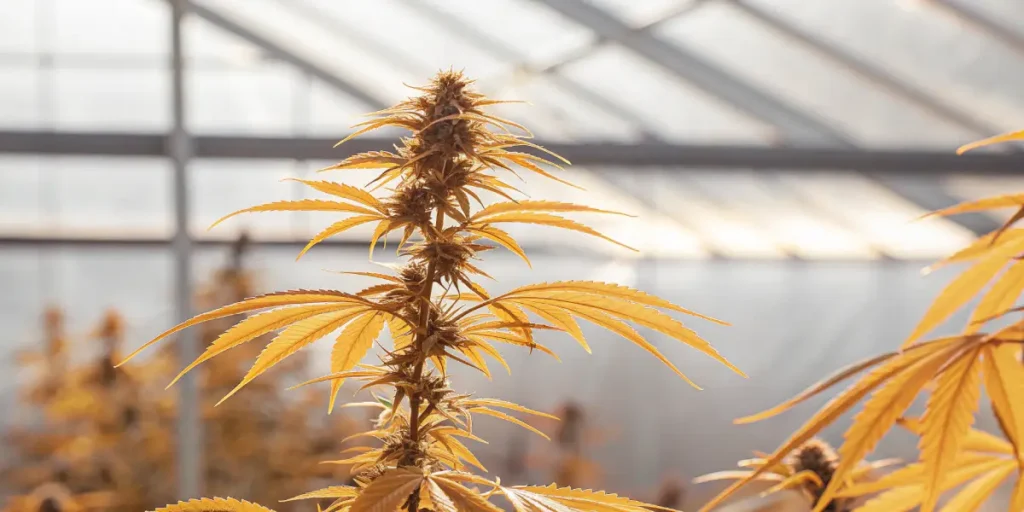
How Apical Dominance Affects Cannabis Plant Shape
The shape of your cannabis plant is largely determined by apical dominance. When the main stem is allowed to grow unchecked, it results in a tall, Christmas-tree-like shape. This traditional shape is beneficial outdoors where the sun can reach all parts of the plant throughout the day.
However, in indoor settings, a tall plant can be a disadvantage. The lower branches may not receive enough light, leading to underdeveloped buds. By managing apical dominance and encouraging lateral growth, growers can achieve a more balanced plant with an even canopy.
How apical dominance affects cannabis plant shape is also influenced by the strain’s genetic predispositions. Some strains naturally exhibit stronger apical dominance, while others are more prone to bushy growth. By recognizing these tendencies, growers can tailor their training methods to achieve the desired plant architecture.
Moreover, by knowing how apical dominance affects cannabis plant shape, growers can plan their cultivation setup more effectively. For instance, in a Sea of Green (SOG) setup, managing apical dominance is crucial to maintaining an even canopy and maximizing the number of flowering sites per square meter.
Managing Apical Dominance in Cannabis Plants
Effective management of apical dominance involves using techniques like topping, fimming, and low-stress training (LST). Topping involves cutting the main stem to promote the growth of side branches. This encourages the plant to develop a bushier shape, which can be beneficial in confined spaces.
Fimming, similar to topping, involves pinching the new growth at the top of the plant. It’s a less exact method but can result in even more branching. Both these methods disrupt the flow of auxin, allowing lateral branches to catch up with the main stem.
Managing apical dominance in cannabis plants also requires an understanding of timing. Performing these techniques at the right stage of growth is crucial for minimizing stress and optimizing results. Generally, the vegetative stage is the best time to manage apical dominance, as the plant is most resilient and capable of recovery.
Additionally, managing apical dominance in cannabis plants can be complemented by environmental adjustments. Ensuring optimal light levels, nutrient availability, and humidity can enhance the plant’s ability to respond positively to training techniques, resulting in healthier, more productive growth.
Apical Dominance Role in Cannabis Yields
The role of apical dominance in cannabis yields is significant. By knowing and managing it, growers can potentially increase their harvest. A single dominant cola is impressive, but multiple colas can exponentially boost your yield.
When you break the apical dominance by topping or using LST, you allow the plant to focus on producing several large buds instead of just one. This distribution of energy results in more uniform growth and can improve the overall quality of your buds.
The apical dominance role in cannabis yields is not only about quantity but also quality. By encouraging an even canopy with balanced light exposure, the plant can produce more resinous buds, which are highly prized for their potency and flavor profiles.
Furthermore, the apical dominance role in cannabis yields can be strategically leveraged to stagger harvests. By managing the plant’s growth, growers can create a continuous cycle of flowering and harvesting, ensuring a steady supply of fresh buds throughout the growing season.
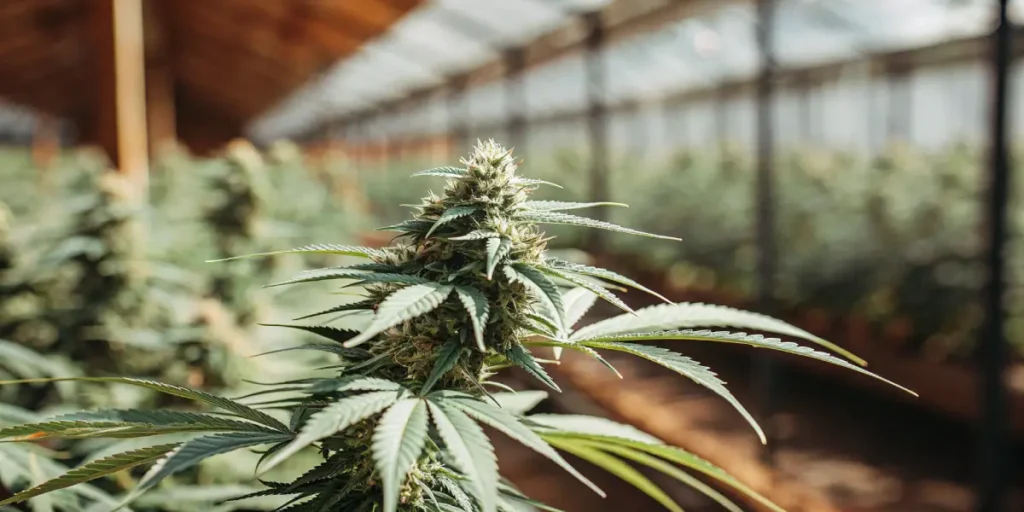
FAQs
What is the best technique to manage apical dominance in cannabis?
The best technique depends on your growing setup and goals. Topping is popular for promoting bushier plants with multiple colas. It’s effective for both indoor and outdoor grows. Fimming is another option that encourages even more branching. If you’re new to plant training, starting with topping might be the simplest approach.
For those who prefer gentler methods, low-stress training is excellent. It involves bending and tying down branches to create an even canopy. This method can be used alone or in combination with topping or fimming for maximum effect. Choosing the right technique depends on the strain you’re growing and the space you have available.
Knowing what is apical dominance in cannabis is crucial when selecting the best technique. Each method has its own advantages and drawbacks, and the choice often depends on the specific goals and constraints of the grower. Experimenting with different techniques can provide insights into which approach works best for your particular setup.
Additionally, the growing environment plays a significant role in determining the best technique to manage apical dominance in cannabis. Factors such as available light, space, and plant count regulations can influence the choice of training method, impacting both the plant’s growth and the overall yield.
How does apical dominance impact indoor cannabis growing?
In indoor growing, space is often limited, making it crucial to manage plant height and shape. Apical dominance results in a tall plant with one main cola, which can cast shade on lower branches. By managing apical dominance, you encourage a more even distribution of light, promoting healthier growth throughout the plant.
Techniques like topping, fimming, and LST can be especially beneficial indoors. They help create an even canopy, ensuring that all parts of the plant receive adequate light. This not only improves plant health but can also increase yields by developing multiple flowering sites.
Apical dominance impact on indoor cannabis growing is significant, as it can dictate how effectively a grower utilizes their available space. By managing apical dominance, growers can maximize the number of plants per square foot without sacrificing light exposure or airflow.
Furthermore, understanding the apical dominance impact on indoor cannabis growing allows cultivators to optimize their environmental controls. This includes adjusting light cycles, nutrient schedules, and ventilation to support the plant’s growth pattern, ultimately leading to a more efficient and productive indoor grow operation.
Can all cannabis strains benefit from apical dominance management?
Most cannabis strains can benefit from managing apical dominance, but the extent varies. Some strains, like sativas, naturally grow tall and may require more aggressive training to control height. Indicas, on the other hand, are typically bushier and may not need as much intervention.
Hybrids often fall somewhere in between and can respond well to a variety of training techniques. It’s important to understand the growth characteristics of the strain you’re working with. Checking the specifics from reputable sources like Blimburn Seeds can guide you in choosing the best approach for your plants.
While apical dominance management can enhance the growth and yield of most strains, the specific techniques and their intensity should be tailored to the plant’s genetic predispositions. Some strains might respond better to low-stress methods, while others may thrive with more aggressive interventions.
Moreover, experimenting with different techniques can help growers discover the best ways to manage apical dominance for each strain. Keeping detailed records of how each strain responds to various methods can provide valuable insights, leading to more effective cultivation practices over time.
Are there any risks associated with manipulating apical dominance?
While manipulating apical dominance can be beneficial, it does come with some risks. Topping or fimming can stress the plant if not done correctly, potentially slowing growth or reducing yields. It’s crucial to use clean tools and make precise cuts to minimize stress.
Low-stress training carries fewer risks but requires patience and regular adjustments. If done too aggressively, it can still harm the plant. Monitoring your plants and adjusting your techniques based on their response is key to minimizing risks and maximizing benefits.
One of the potential risks associated with manipulating apical dominance is the increased vulnerability to environmental stressors. When plants are recovering from training, they may be less resilient to changes in temperature, humidity, or light, necessitating careful environmental management.
Additionally, improper manipulation of apical dominance can lead to uneven growth patterns or reduced vigor. It’s important for growers to carefully monitor their plants after training and make necessary adjustments to support recovery and ensure successful outcomes.
What are the signs of successful apical dominance management?
Successful management of apical dominance in cannabis is evident through the plant’s shape and health. A well-managed plant will have an even canopy with multiple colas, leading to better light exposure and potentially higher yields. You’ll notice more uniform growth and possibly larger buds.
Another sign is the plant’s overall vigor. If the plant remains healthy and continues to grow steadily after training, it’s a good indication that the techniques used were effective. Regularly checking your plants for signs of stress can help ensure successful apical dominance management.
Signs of successful apical dominance management also include enhanced bud development and increased resin production. When plants are properly trained, they tend to focus energy on developing larger, denser buds, which can improve both the quantity and quality of the harvest.
Furthermore, successful apical dominance management is reflected in the plant’s ability to recover quickly and resume normal growth patterns. Observing the plant’s response over time can provide valuable feedback for refining training techniques and achieving even better results in future grows.


